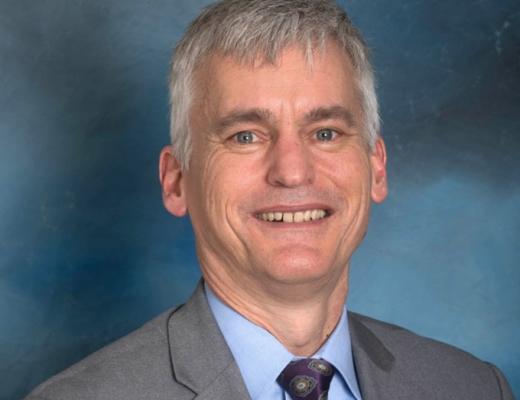‘New norms of behavior’: Facilities personnel planning for fall campus life

Via the University of Pittsburgh
Scott Bernotas, the associate vice chancellor for facilities management, led Monday afternoon’s Senate Plant Utilization and Planning Committee meeting.
June 16, 2020
According to Scott Bernotas, the University’s new capacity guidelines may have classrooms feeling emptier this fall.
“We are limiting the number of folks that are in the classrooms so that everybody can maintain a safe distance,” Bernotas, the associate vice chancellor for facilities management, said.
Bernotas led Monday afternoon’s Senate Plant Utilization and Planning Committee meeting to provide updates on campus policies that will take effect for the fall semester due to the ongoing COVID-19 pandemic. Every classroom will be outfitted with guidance on how many students can occupy the room at once, Bernotas said, with signs on each chair designating whether or not a student can sit in it.
He said this is one part of the multi-step plan the University is using to create a safer and smoother transition to life on campus.
“Guidance continues to evolve on a national level, state level, local level,” Bernotas said. “As that evolves, we’re continually evaluating our efforts against that guidance with focus, first and foremost, on everyone’s safety.”
The first step of the plan, and the most labor-intensive effort to keep University spaces safe, Bernotas said, is the ongoing cleaning of all campus facilities. University maintenance staff conducted a “deep clean” of all buildings since campus closed, and continues to “step up” their cleaning of high-touch areas such as elevator buttons, light switches and doorknobs.
This will continue into the fall semester, Bernotas said, with common spaces such as classrooms, bathrooms and elevators being disinfected multiple times each day. Supervisors will oversee all of this maintenance work.
“We have a lot of folks that are maintaining the building systems, keeping the buildings clean, and we need to make sure that we have a good process to make sure that all of this work is done properly,” Bernotas said.
Once students return to Oakland in mid-August, the most difficult part of the plan becomes enforcing social distancing guidelines across campus. In order to control for the thousands of students returning to Oakland, all University buildings are equipped with signage to direct heavy foot traffic, as well as mandating the number of occupants allowed in lobbies and elevators in order to de-densify as many spaces as possible.
“We’re also working with the provost and the registrar to develop plans to address social distancing in our classrooms,” Bernotas said. “As students prepare to return, we want to make sure they’re remaining socially distant as well, so we’re providing signage and working with the provost on what each of those classrooms will look like.”
In addition to modifying classroom capacity, Bernotas said, many University spaces will no longer provide lounge areas in order to discourage large groups of students from congregating.
Lucy Russell, a vice provost and the chief of staff to Provost Ann Cudd, said Pitt’s plans are not foolproof, and will require extra preparation to account for the increased risk a full student population presents on campus.
“One answer is new norms of behavior,” Russell said. “But I think all that is still being worked out.”
According to Russell, “many thousands of masks” for students are on order, though it is not yet clear the number of masks each student will receive nor how the masks will be distributed. Pitt officials said last month they were thinking about distributing one mask to every employee, and two to every student.
Though planning is not final, Bernotas said he is confident that the University’s plans are robust enough to guide the student and staff population safely through the pandemic’s uncertainty.
“Our plans are evolving, there is a lot more to come. But what’s there are the initial stages,” Bernotas said. “We continue to work to make sure that we are in compliance, and within guidelines and standards.”







